


Chapter 6
I Construction During The Settlement Years
II The Use Of Timber As A Structural Material
III Structural Steel
IV Concrete Technology
V Housing
VI Industrialised Pre-cast Concrete Housing
VII Ports And Harbours
VIII Roads
IX Heavy Foundations
X Bridges
XI Sewerage
XII Water Engineering
XIII Railways
XIV Major Buildings
XV Airports
XVI Thermal Power Stations
XVII Materials Handling
XVIII Oil Industry
XIX The Snowy Mountains Scheme
XX The Sydney Opera House
XXI The Sydney Harbour Bridge
XXII Hamersley Iron
XXIII North West Shelf
Sources and References
Index
Search
Help
Contact us

Alongside this large bridge development has also been a continuous but lower key development of smaller rural highway bridges designed for remote areas, where construction difficulty, maintenance and transport of materials must be kept to a minimum. In this field developments in composite bridges with concrete decks on steel or concrete beams have been made.
As an illustration of the development of bridge technology in Australia, some notable bridges are listed below:
Among the masonry arch road bridges built in the early years of settlement, the following stand out:
- Coal River Bridge, Richmond, Tasmania -the oldest existing bridge in
Australia - Macquarie River Bridge, Ross, Tasmania (Fig. 31) -high quality stone work
and unique carvings (1836) - Coliban River bridge, Malmsbury, Victoria (Fig. 32) -basalt masonry arch of fine standard spanning 18.3 m to a maximum height of 22.6 m (1861)
- Nepean River bridge, Menangle, New South Wales (Fig. 33) -early wrought iron box girder through bridge, with original span length of 49.4 m (1863)
- Moorabool River, Fyansford, Victoria -the first concrete arch by Sir John
Monash (1900) - Lockyer Creek, Helidon, Queensland, (Fig. 34) -slender form concrete arches with high quality detailing (1910)
- Sydney Harbour bridge, New South Wales -the largest steel arch of its time in
the world - Gladesville bridge, Sydney, New South Wales (Fig. 29) -the largest concrete arch of its time in the world
- Batman bridge, Tasmania (Fig. 30) -first cable-stayed steel truss bridge in Australia
- Gateway bridge, Brisbane, Queensland (Fig. 11) -the longest and widest balanced cantilever construction in precast concrete in the world (under construction)
- Merivale railway bridge, Brisbane, Queensland (Fig. 9) -steel tied arch bridge of imaginative appearance
- Bowen bridge, Hobart, Tasmania (Fig. 35) -the first glued segmental prestressed concrete bridge in Australia
Two railway viaducts illustrating well developed technology for their time are:
Two early reinforced concrete arch bridges of note are:
Examples of large bridges which demonstrate advanced technology are:
This list is very brief and picks out some of the historical or spectacular bridges in the country. It draws on the detailed survey of Australian bridges undertaken by Professor Colin O'Connor of Queensland University. His book Spanning Two Centuries -Historic Bridges of Australia published by the University of Queensland Press is recommended for further study, as are also C. O'Connor, 'Register of Australian Historic Bridges' Institution of Engineers, Australia, 1983 and C. O'Connor, 'How to look at Bridges', Institution of Engineers, Australia, 1983.
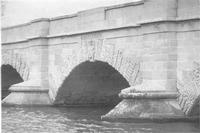
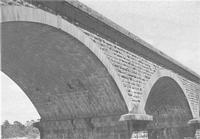
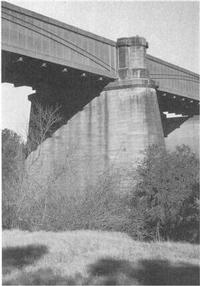
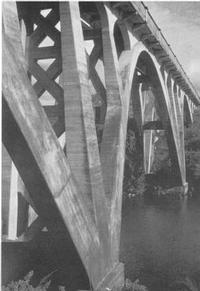
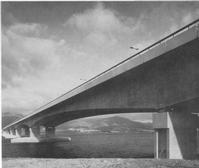
People in Bright Sparcs - Laurie, J. B.; Monash, Sir John
 |
Australian Academy of Technological Sciences and Engineering |  |
© 1988 Print Edition page 359, Online Edition 2000
Published by Australian Science and Technology Heritage Centre, using the Web Academic Resource Publisher
http://www.austehc.unimelb.edu.au/tia/361.html